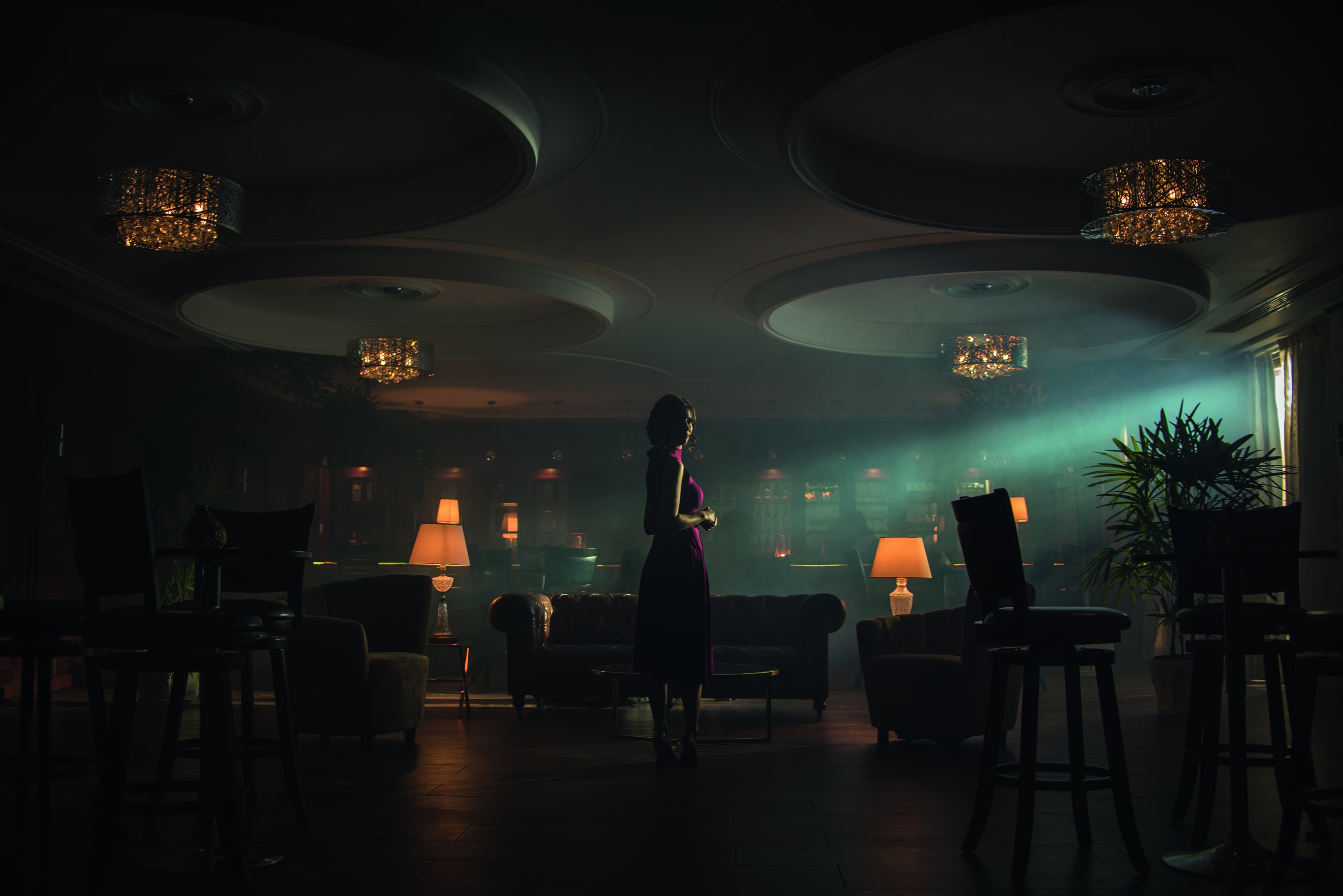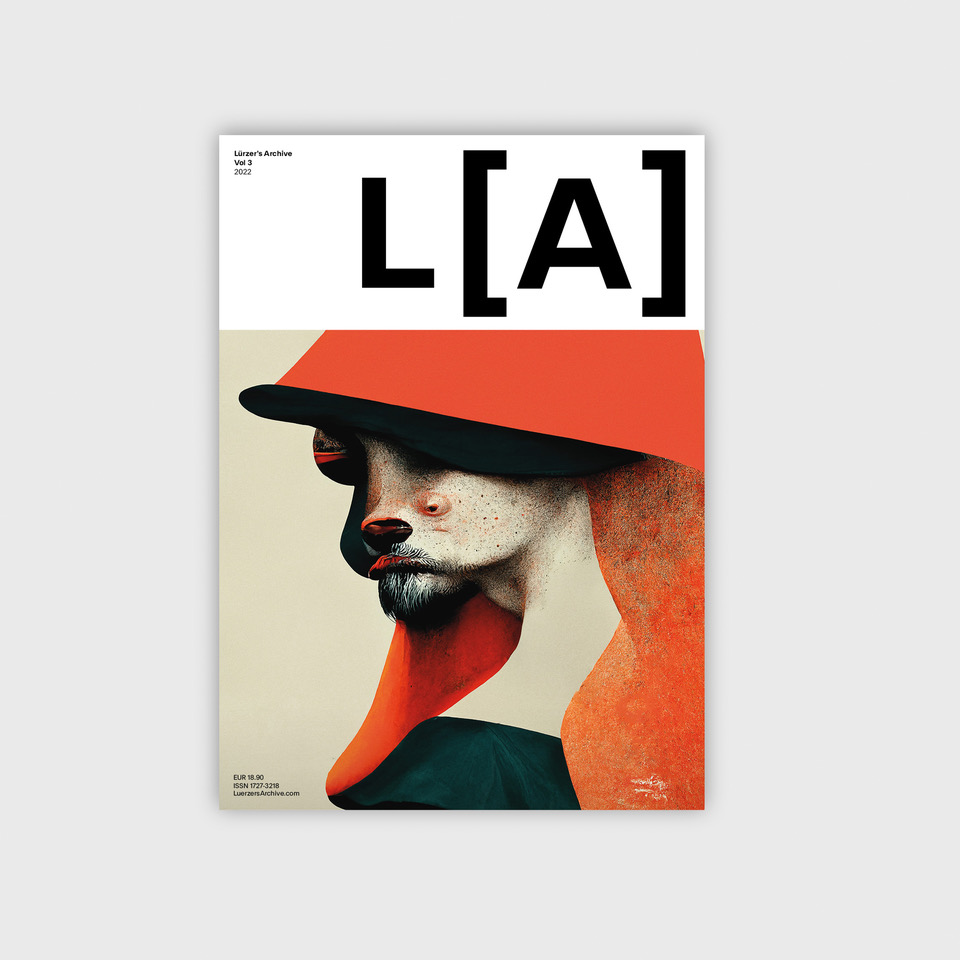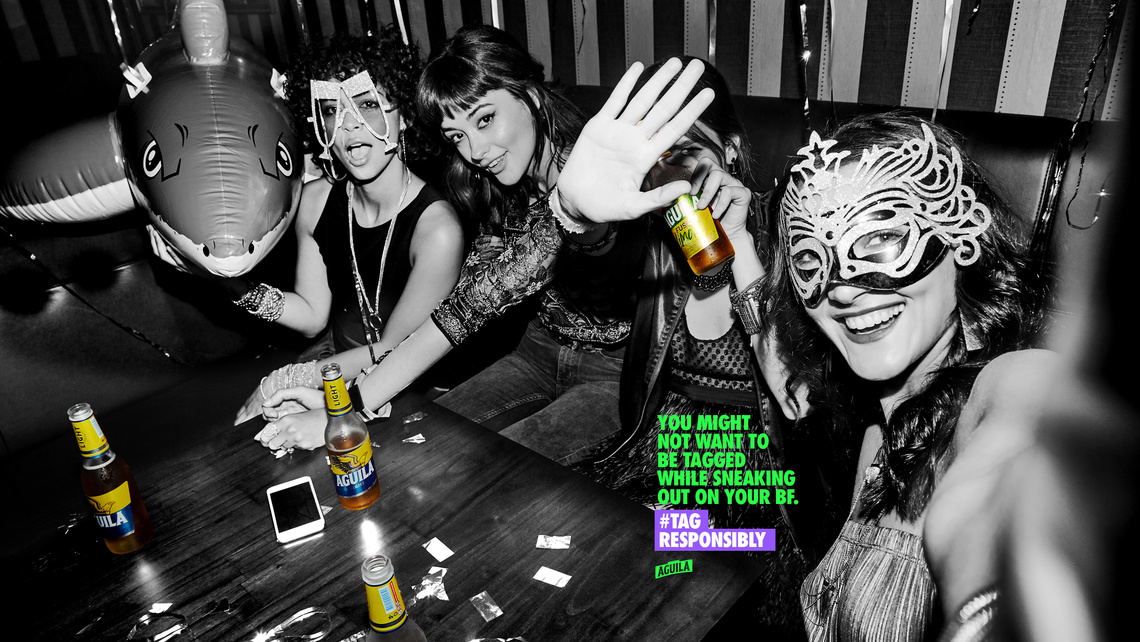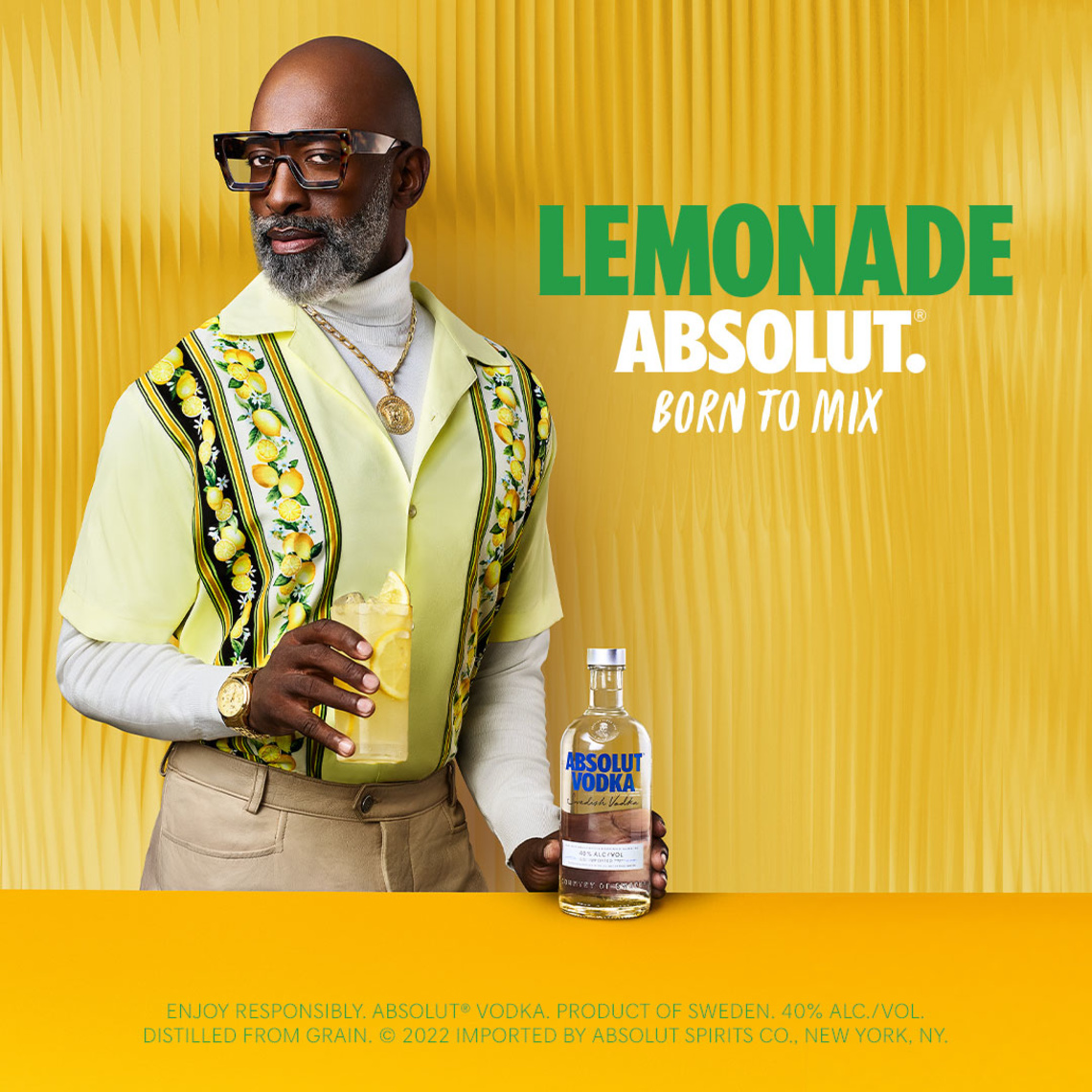
Why social media likes to drink
Interview
Craft beers and niche liquor brands are all the rage and using social media to come to market. In a departure for L[A] we look outside the conventional ad world and ask Dan Hooper, Los Angeles based Creative Director of the YesMore agency, what’s happening in today’s Instagrammable drinks world.
L[A] Can you tell us a little about YesMore – how long it’s been going, your clients in the US and Europe, and why social media is now such an important part of drinks marketing.
DH YesMore is a creative-led marketing agency working specifically for brands within the drinks industry. Our clients include Aperol Spritz, Grey Goose vodka, Dutch Barn Orchard vodka, Black Tower Wine and many more. We’ve just celebrated our fifth birthday and have seen a lot of changes in the social media landscape in that short amount of time. To us, it feels as if social media somehow becomes more and more integral to how brands speak to their consumers year on year. Specifically with drinks products, there’s so much important information to get across, from heritage, serving suggestions and tasting notes, that an always-on social media presence really suits a modern drinks business. Not to mention the number of new drinks brands that need to find smart and creative ways of competing with the giants. Social media is the perfect realm for this.

This feature is from Lurzer’s Archive Volume 03/2022
L[A] Our magazine is mainly about the more conventional parts of advertising – print, billboards and TV/video. But our readers increasingly have to work across media platforms incorporating social media. Do you work alongside ad agencies or separately? What’s best for your clients? How should our creative readers work with agencies like YesMore?
DH It seems in 2022 agencies have to be able to do a bit of it all! While the traditional agencies are being asked to incorporate social media, we often are asked how to wrap print and broadcast into our work. The obvious answer is starting with a great idea (I’m sure we’ve all heard this one before!). But make sure your initial idea isn’t linked too hard to its medium. We really push for concepts that fit the brand and consumer culture perfectly, but are still loose enough for all agencies involved to be able to have some fun and adaptable for the prospective mediums.
The most painful mistake we see on a monthly basis is the above-the-line team sending cut downs of the broadcast spot for social. These can fit the bill for running as social ads with large amounts of media spend behind them, where we just push for eyes on brand and frequency of viewing. But if you want people to engage, this is not the answer.
L[A] The market on both sides of the Atlantic seems to have exploded in terms of smaller, craft brands – is that due to influencers and social media, or just a desire by consumers for something new and different?
DH It’s worth noting that new brands have been cropping up in the space steadily over the last decade, but there are slight nuances on what’s being launched. For example the more recent boom of celebrity-led brands, and even more niche, celebrity-led tequila brands.
I feel this was really pioneered by the craft beer movement. The beer giants got caught sleeping, all offering identical(ish) tasting plain lagers. The moment something new and interesting came onto the scene, people flocked to it.
People ultimately like finding new brands and new tastes, new ways to feel like an individual, yet at the same time being a part of a group. It’s a weird bit of human psychology and often a thin line to walk but we don’t see it changing any time soon!
L[A] The cost of entry into the alcohol market seems to have come down dramatically – is that because of social media? In the UK, for example, literally hundreds of small gin brands have come to market as well as endless craft beers. Is something similar happening in the US?
DH Cost of entry into the market is sadly something that’s in upheaval currently. There are once again C02 shortages and grain shortages due to the war in Ukraine. Not to mention the cardboard and glass shortages/price hikes which are a mix of Covid and the UK’s Brexit. Now with the upcoming cost of the energy crisis, I don’t think small start ups will be able to operate as low cost as they have been to date.
Gin boomed in part due to the revival of the liquid (hundreds of reasons!) and the fact that it’s a relatively simple alcohol to distill with no need to age over time. It can come straight off the still, into the bottle, then out to retail.
The same can’t quite be said here in the States. There’s not as great a love affair with the classic G&T here, the margarita seems to be more their speed. This year (2022), shoppers in the US will spend more money on mezcal and tequila than whiskey, the country’s second most popular spirit. I often compare the meteoric rise of gin in the UK to the boom of tequila/mezcal in the States.
L[A] If gin and small, local craft beers are the big trend in the UK, what are the major trends in N. America? Tequila? What’s happened to vodka… has that become less popular?
DH Vodka is easy to overlook but it’s still the most sold spirit in the country (Tito’s to be precise). So vodka is still in the lead and by quite some margin, make no mistake. Using volume as a measure, it sold 78.1 million cases in 2021, more than double the volume of premixed cocktails which was the next category. Tequila and mezcal were fourth on this scale for reference.
I’m keeping a very close eye on tequila and mezcal brands, as are a plethora of celebrity faces – including Dwayne “The Rock” Johnson, Breaking Bad co-stars Aaron Paul and Bryan Cranston; Nick Jonas, Rita Ora, Adam Levine and Justin Timberlake to name a few.
L[A] There is a clear trend among young people in Europe to drink less (not that I’ve noticed it in my own children)… is this also true in the States?
DH Younger generations are undoubtedly drinking less in the States, the World Health Organization (WHO) has reported this is actually a global trend. There are a lot of factors that go into this but from my perspective here in California, it is again due to individualism. Most times each generation wants to do something different from the last one with Gen Z being no different, looking to shed the cultural trends and traditions set by previous generations. On top of this, no generation has ever been so recorded. The always-on nature of social media means any behavior (good or bad) can be captured and shared in seconds. What’s interesting is that the late night booze-filled shenanigans that were worn as medals to be proud of by the millennial generation, are anything but for Gen Z. Apparently falling asleep with your face in your KFC bucket is now no longer something to be proud of.
Lastly, the rise of cannabis especially in California has potentially decreased spending or interest in alcohol, though the jury is still out on its exact effect at this time.
L[A] One of the big growth areas is no-alcohol beers and spirits. What’s going on?
DH Yes, this is another trend that we’re seeing in multiple markets. The want for non-alcoholic and “functional” beverages is another area very much in growth. In my opinion, this is another trend led by social media. Sitting around and consuming round after round of drinks with friends isn’t all that captivating in terms of content. Instead, younger generations would rather involve themselves in activities where they’re not hindered by alcohol. Hiking, exploring, dancing, traveling are all big hitters in terms of social currency now.
L[A] Can you give us one or two examples of where social media and conventional advertising have combined to create a really effective campaign?
DH This year Heineken released The Closer. A Bluetooth-enabled bottle opener that closes down your laptop once a beer is opened. A fairly simple concept but the execution was fantastic.
Their broadcast spot chimed with what many of us are feeling on the other side of the pandemic – that we all seem to be working 24/7 now. The cure to this is simply a friend cracking open a cold one… even if you are mid-meeting. Where their social promotion was smart, was linking up with Austin Evans, a tech YouTuber with over five million followers to review the opener, reaching an audience they otherwise might not be talking to by sticking to the usual sports crowd. While it was really fun, it did touch on a serious subject of poor work-life balance, elevating it above the usual conversations a beer brand finds itself in.
L[A] Or an example or two of where the main driver of a brand’s success has been social media.
DH Although they’re at the center of a lot of controversy, Brewdog has utilized social media in a way no big beer brand has effectively done prior. Their tone of voice lent itself perfectly to social and by linking that to a way their fans could actually support them monetarily, made for a wildly successful crowdfunding campaign.
TikTok is somewhat a gray area for alcohol marketers. As there is currently no age gating on the platform, we advise all of our clients not to advertise in the space. But with TikTok bringing in so many monthly users, it’s hard to deny the appeal.
TikTok estimates that it has about 80 million monthly active users in the US. 60% are between the ages of 16-24, so it’s definitely a younger platform than most, with Facebook’s largest age range being the 25-34 category. But the rather sizable chunk of TikTok users under the age for consumption in the US highlights how it’s not really appropriate for alcohol marketing in the US currently.
Related

17.11.2022
Decoding the future
Which themes and memes will come to dominate food this decade
L[A] Have you spotted any particular trends in the way drink is marketed creatively? Do you have a current favorite drinks ad campaign?
DH People know that consumers don’t need to see the same frosted beer glasses and models sitting around drinking together that they’ve seen for twenty years. Ryan Reynolds is probably the best current example with Aviation American Gin and their short (often straight to YouTube) ads that serve as comedy content more than an ad. The vasectomy cocktail he created for Father’s Day in 2021 gained over 7m views and is well worth a watch.
L[A] What are your predictions for how the drinks market will develop over the next few years?
DH I hate to say it, but I think it’s going to be a really rough ride, especially for any small breweries, over the next year or so. Global recession on top of a multitude of other price rises and goods shortages makes it an almost impossible journey to navigate. So I think we’ll see the number of new breweries/beer brands slow. I also think we’ve just about hit peak gin, I’m not sure many retailers will take a meeting with any new gin brands having been inundated with them over the last three or four years.
With bar closures on the rise, home drinking and entertaining will become the norm, but with this, people will be looking for ways to serve interesting and high quality drinks. Whatever alcohol brands can do to ensure a high quality (and Instagrammable!) drinking experience at home will be winning new customers.
L[A] What’s your favourite drink(s)? And where do you like to drink it – bar, restaurant, home?
DH I always love answering this question. I will say a mezcal margarita at home is a particular Friday night treat. They’re fun to make and refreshing after a hot day. When we go out to a restaurant I’m most likely to find a local beer, I’ll drink most styles but nothing really above 6% anymore. I have a two-year-old and have to be up at 6am most days!
L[A] Finally, is there a drinks ad campaign of the past 10 years that you wish you’d been involved in?
DH Oh so many! There are easily thirty brands I wish I’d launched or designed the branding of. But in terms of a campaign that always comes back to me, it’s got to be Babe Wine’s Moving On campaign.
In the opening months of the pandemic they partnered with dating app Bumble to cover the moving costs of women who are stuck living with an ex during lockdown. Babe Wine and Bumble are all about female-first, taking the lead and making bold choices. For me this campaign just fits the brand so perfectly, I really wish I was behind it!
Dan Hooper: Dan is Co-Founder and Creative Director of YesMore, a Los Angeles and London-based alcohol marketing agency. His Instagram channel @BrewWithAView is home to thousands of beer fans worldwide, pairing worldwide travel with the drinking of great beer. He has a monthly column in The Buyer and has written for The Drinks Business, Hop Culture, Campaign and Drinks International.




